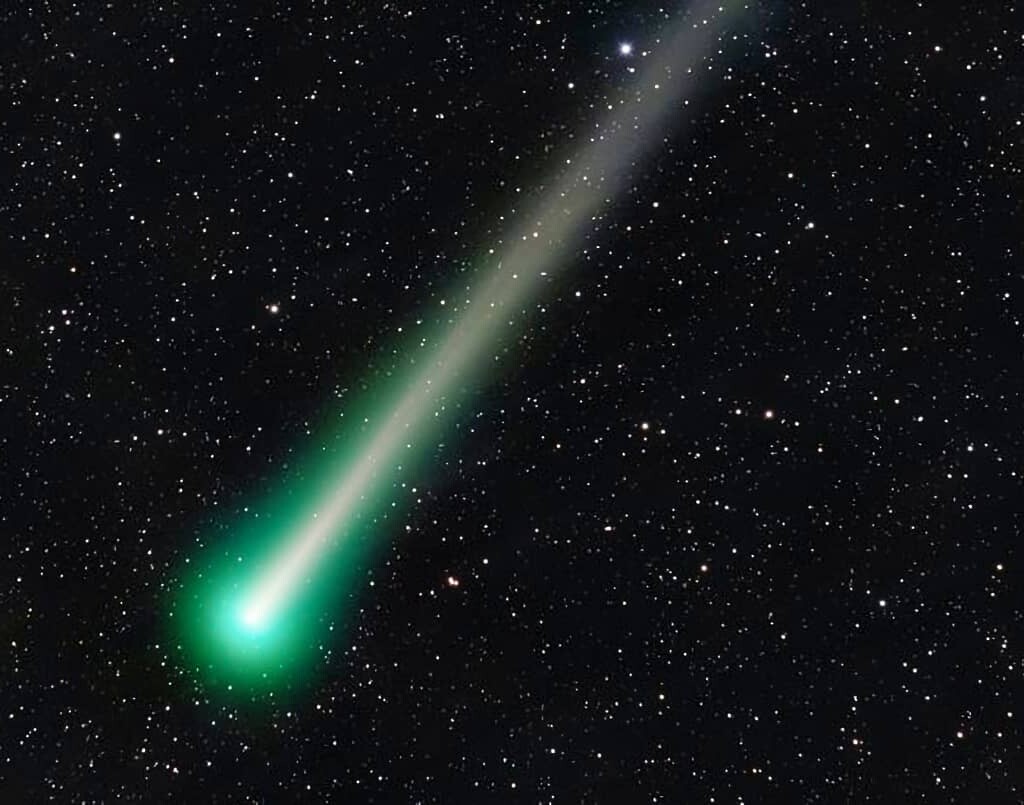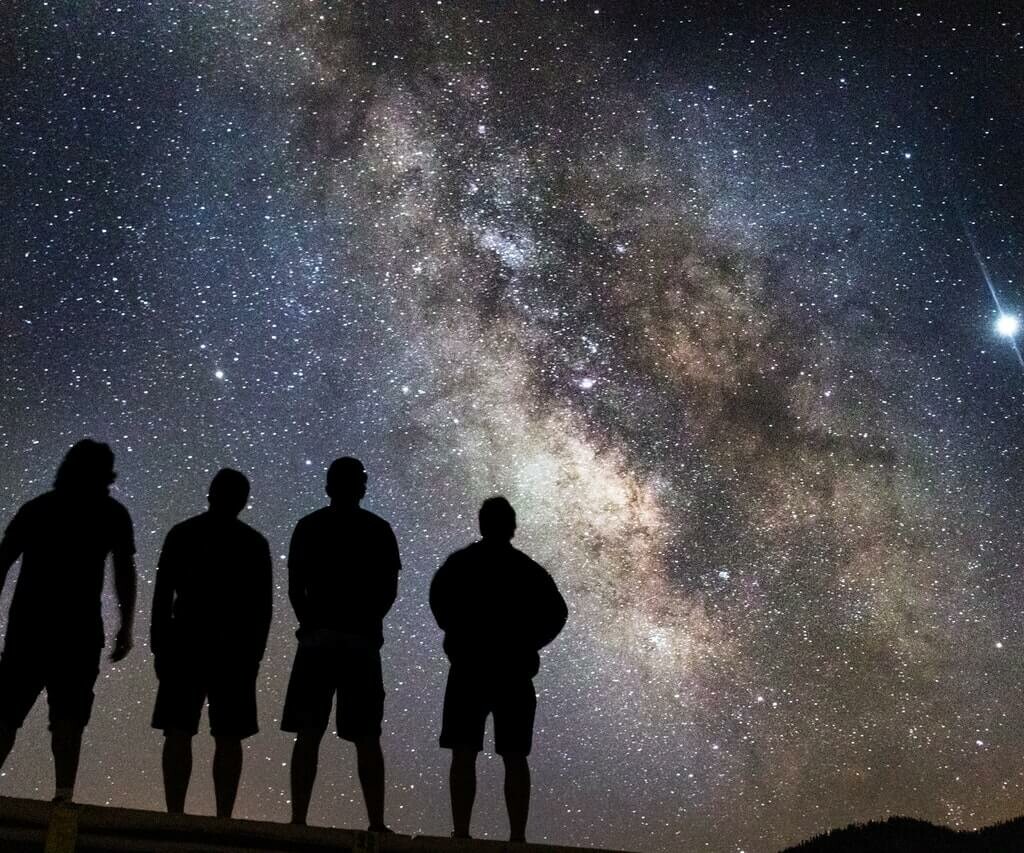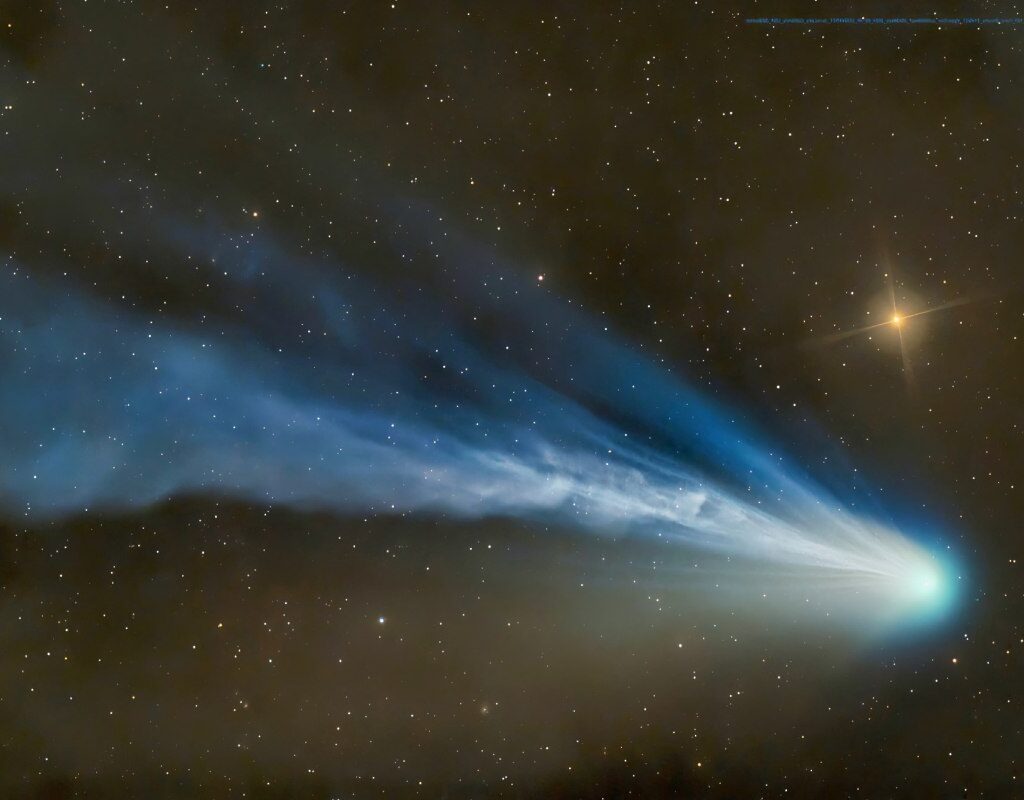How, where and when to see the green comet that will make the closest approach to Earth since the Ice Age. We may be the last humans to see C/2022 E3 (ZTF), a celestial body that may never return.
Where to see the green comet C/2022 E3 (ZTF) before it disappears
Since the last ice age, C/2022 E3 (ZTF), also known as Comet ZTF, has not been in our cosmic neighborhood. It was discovered in March by the Zwicky Transient Facility.
The comet is believed to orbit the sun every 50,000 years, which means that the last time it passed this way, Neanderthals were roaming the planet and humans had just begun their first migration out of Africa.
These prehistoric people would not have been able to observe the comet without telescopes and binoculars. They may never have the chance to see it again.
According to some predictions, this comet’s orbit is so eccentric that it is no longer in orbit; therefore, Jessica Lee, an astronomer at the Royal Observatory Greenwich, told Newsweek that the comet will simply continue to move.
With that in mind, it is worth looking for Comet ZTF and becoming one of the few people to see it up close. According to NASA, the green comet will be visible in the northern hemisphere in the early morning hours of late January.
- On January 21, dark skies may be ideal for viewing the comet due to a fully eclipsed new moon.
The comet will be visible in the southern hemisphere in early February
On February 2, Comet ZTF will make its closest approach to Earth, passing within 26 million miles of our planet. The comet will burn so brightly that it will still be visible in the night sky, despite being nearly 109 times farther away than the Moon on average.
Although the moon will be bright and the comet will be “as faint as an object can be seen without optical aids in a very clear and very dark sky,” the Adler Planetarium predicts that the comet will be brightest on January 31 and February 1.
Some tips to help you see it
Comet ZTF will initially require a telescope to see, but as it gets closer to Earth, observers will be able to see it with binoculars or even the naked eye.
Although comets are notoriously unpredictable, if this one maintains its current brightness trend, it will be easy to see with binoculars and may even be visible to the naked eye in low-light conditions, according to a December 29 update from NASA.
The darkest possible sky, away from city lights and a clear night are the best conditions for viewing. The sky will be even darker when the moon is in the twilight, or at least when it is below the horizon.
Where to look in the night sky
To see the green comet, you’ll need to focus on the right stars. According to EarthSky.org, the comet is currently passing through the constellation of Bootes, near the edge of Hercules.
On January 30, it will be visible near Polaris, the North Star, as it moves in that direction. As it gets closer to Polaris, it will appear earlier in the evening.
Compared to other stars, it will probably appear a bit fuzzy, according to Thomas Prince, director of Caltech’s WM Keck Institute for Space Studies, who spoke with FOX Weather.
According to Prince, the comet will be 1.5 degrees from Mars in the southern hemisphere on February 10. If you hold it at arm’s length, that’s about the width of your little finger. Look for the comet circling Mars in the sky, if you can find it.
In any case, the Virtual Telescope Project will be offering a free live webcast of the comet on its website and YouTube page starting at 23:00 EST. Astronomy buffs can find the exact location on this astronomical map.
What makes it green?
According to NASA, the comet has a “greenish coma, a short, broad dust tail and a long, faint ion tail.
Many comets have a green glow. A reactive molecule called dicarbon, which emits green light when decomposed by sunlight, has been linked by laboratory research to this aura.
Dicarbon is usually found in comets, but rarely in their tails. This is why a comet’s tail remains white, while the coma, the haze surrounding the ball of icy gas, dust and rock at its center, glows green.
With information from infobae.com




